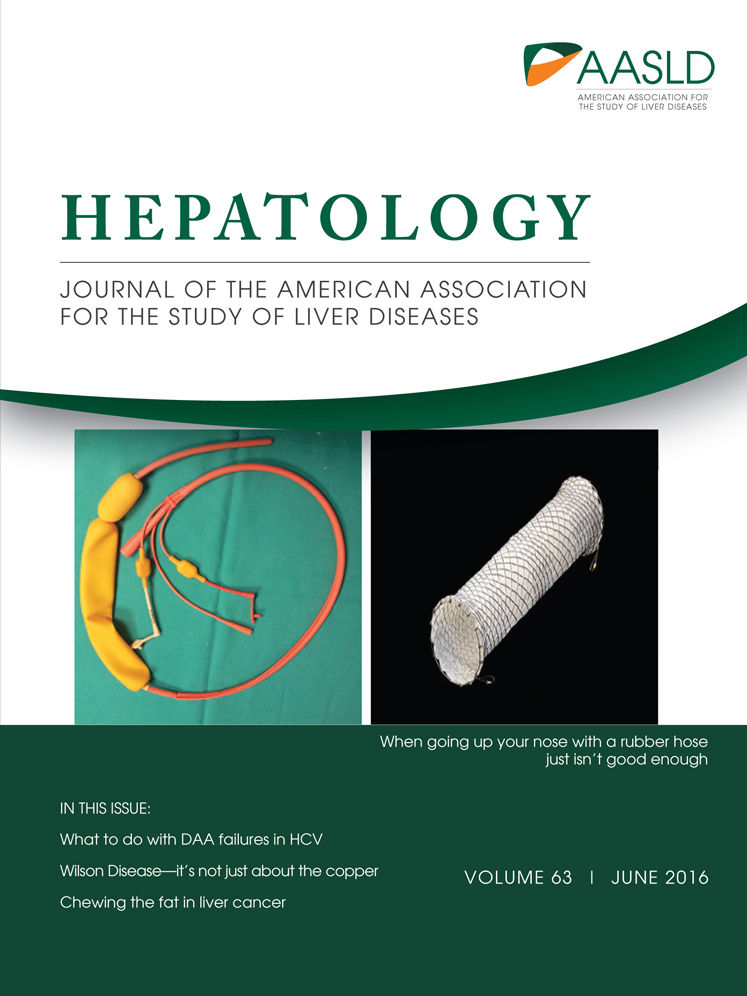GNPAT variant is not associated with severe iron overload in Irish C282Y homozygotes
Potential conflict of interest: Nothing to report.
Following the recent publication by McLaren et al. whereby the rs11558492 polymorphism in the GNPAT gene (p.D519G) was demonstrated to be a modifier of the hereditary hemochromatosis (HH) phenotype in a cohort of male C282Y homozygotes, we sought to examine this polymorphism in the Irish HH population.1 We looked at the polymorphism in our C282Y homozygous HH population as a whole (n = 263), in males only (n = 177), and in males categorized according to a serum ferritin value at diagnosis of (1) ≥1000 μg/L (n = 57, median serum ferritin 1650 μg/L, interquartile range 1196-1947 μg/L) and (2) <1000 μg/L (n = 100, median serum ferritin 558 μg/L, interquartile range 420-810 μg/L).
Allele frequencies of GNPAT p.D519G were similar across all groups (chi-squared test, P = 0.632). The allele frequency of GNPAT p.519G was 24.5% for the whole population and 23.7% for males only, in agreement with frequencies reported in 35 male C282Y homozygotes resident in the United States, Canada, and Australia (24.3%) and in 274 French male C282Y homozygotes (26.3%).1, 2
Independent t tests did not demonstrate a significant difference in the allele frequency of p.D519G or mean age in males with a diagnostic serum ferritin of ≥1000 μg compared to those with a diagnostic serum ferritin of <1000 μg/L, 19.3% versus 25.5% (P = 0.593), and mean age 50 ± 10 years versus 47 ± 13 years (P = 0.094), respectively.
The allele frequency of 19.3% in those with a diagnostic serum ferritin of ≥1000 μg/L contrasts with that reported by McLaren et al. of 38.6% in a cohort comprising 22 males with a diagnostic serum ferritin of >1000 μg/L.1
Excess alcohol intake was noted in nine individuals (two of whom had serum ferritin ≥1000 μg/L), and when these were removed from the analysis on the whole population, the p.D519G allele frequency was 24.2%
The relationship between diagnostic serum ferritin and the GNPAT p.D519G variant was examined using Pearson product-moment correlation coefficient analysis. Correlation analysis failed to demonstrate any association between the presence of GNPAT p.D519G and diagnostic serum ferritin across all cohorts.
In summary, our data show that GNPAT p.D519G is not associated with a high iron phenotype (diagnostic serum ferritin ≥1000 μg/L) in Irish C282Y homozygotes. Thus, our data disagree with the findings of McLaren et al.1 but agree with the findings of Bardou-Jacquet et al.2 and indeed De Tayrac et al.,3 who did not find the rs11558492 polymorphism to be a significant genetic modifier of the C282Y HH phenotype in a genome-wide association study. Further studies are warranted in order to clarify the role of the GNPAT p.D519G variant as a modifier of the HH phenotype.
-
Eleanor Ryan, Ph.D.1
-
Jennifer Russell, Ph.D.1
-
John D Ryan, MB.BCh., M.R.C.P.I., Ph.D.2
-
John Crowe, Ph.D., F.R.C.P.I., F.R.C.P.E., F.A.C.P., A.G.A.F.1
-
Stephen Stewart, MB.BCh., Ph.D., F.R.C.P.I.1
-
1Liver Centre
-
Mater Misericordiae University Hospital
-
Dublin, Ireland
-
2Translational Gastroenterology Unit
-
Nuffield Department of Experimental Medicine
-
University of Oxford
-
Oxford, UK
References
Author names in bold denote shared co-first authorship.




